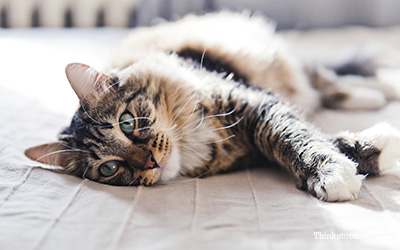Overview
Chylothorax is a condition caused by a buildup of lymph fluid in the chest cavity. Lymph is a bodily fluid that carries protein and cells to tissues through small vessels known as lymphatics. The lymph fluid that accumulates in the chest cavity contains a high quantity of fat and is called “chyle.” Since thorax means “chest cavity,” the name “chylothorax” simply means a buildup of this fatty lymph fluid in the chest.
When chylothorax occurs, the lungs can’t expand normally, which reduces the intake of oxygen and causes breathing difficulties. The exact cause of this disease is not known. It is seen more often in cats with heart disease, blood clots, or cancer, but often no obvious cause is identified.
Symptoms
If your pet is suffering from this condition, you might observe the following:
- Difficulty breathing
- Open-mouth breathing
- Cyanosis (a bluish tinge to the skin/mucous membranes, due to a reduction in oxygen)
- Lethargy
- A decrease in appetite
Diagnosis/Treatment
Chylothorax is a serious condition. If your cat is diagnosed with this, he will require immediate veterinary care. Your veterinarian will remove the fluid from your cat’s chest cavity to makehim more comfortable, and then will look for the underlying cause.

The following tests may be recommended:
- A radiograph, commonly known as an x-ray
- Analysis of the chest fluid, looking for a possible cause
- A CBC and chemistry profile to assess your cat's overall health
- A blood pressure test
- Thoracic ultrasound (which may include a look at your pet’s heart)
If an underlying cause is found, treating it may help to resolve the chylothorax. During treatment, your veterinarian may recommend continued removal of the chest fluid to keep your cat comfortable.
If no underlying cause is identified, your veterinarian will recommend a treatment plan that is right for your pet. It may include periodic removal of built-up fluid, a low-fat diet, and, possibly, surgery—if the condition does not resolve.
Prevention
There is very little you can do to prevent your pet from developing chylothorax. In many cases, the underlying cause is never identified.
If you have any questions or concerns, you should always visit or call your veterinarian – they are your best resource to ensure the health and well-being of your pets.
